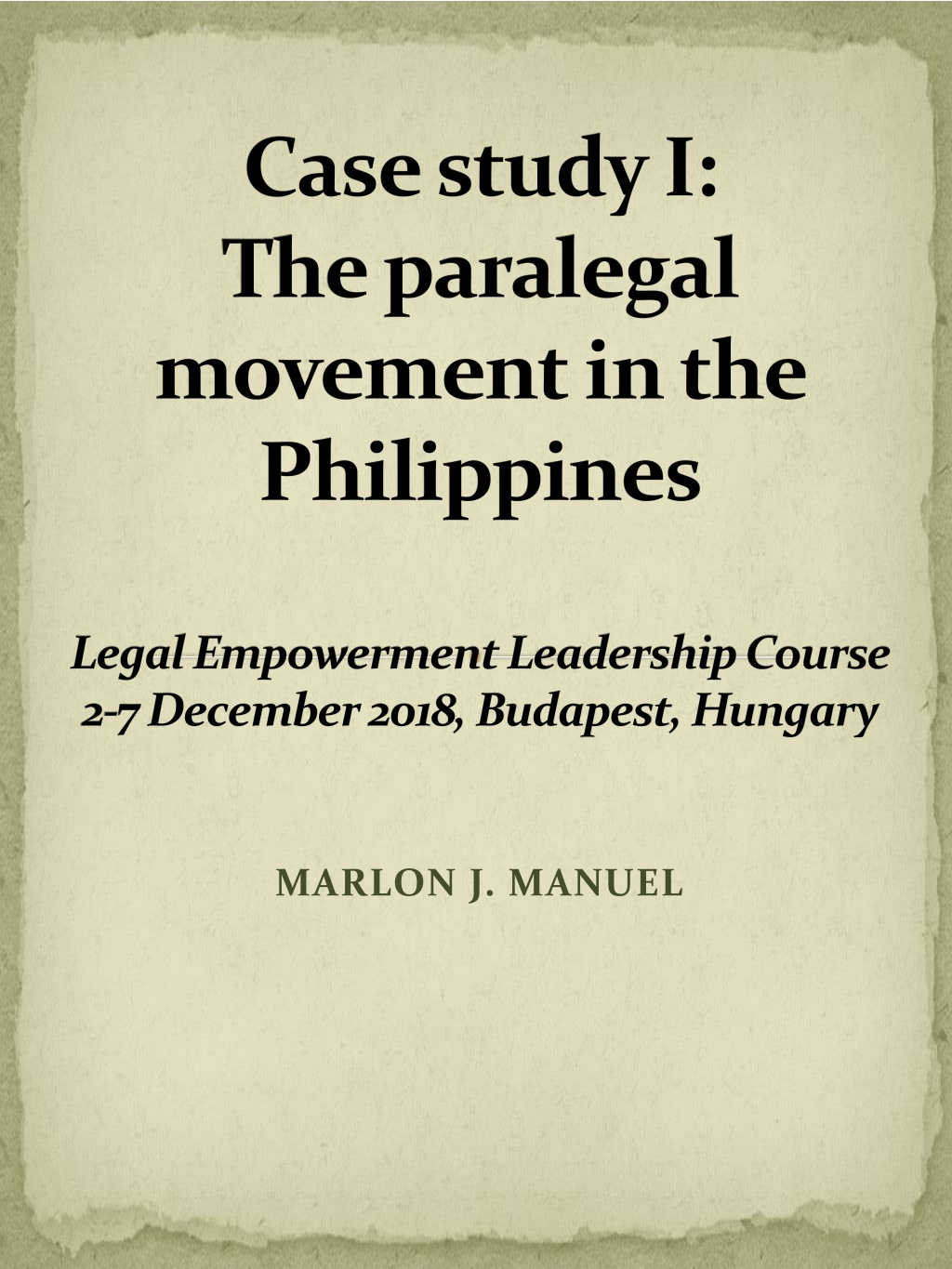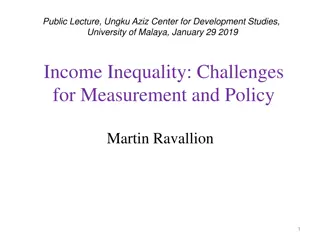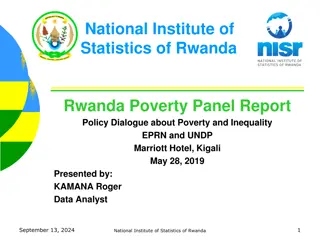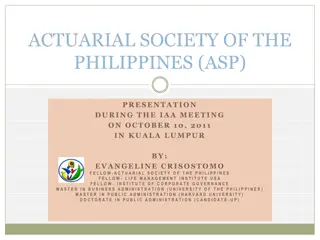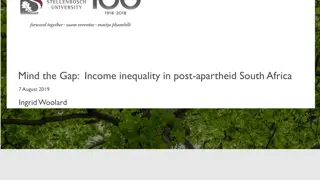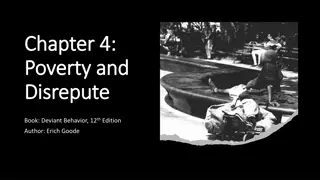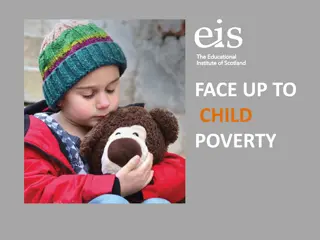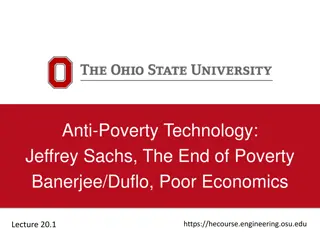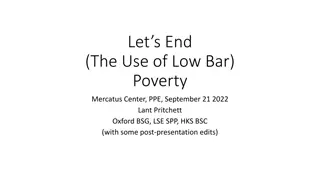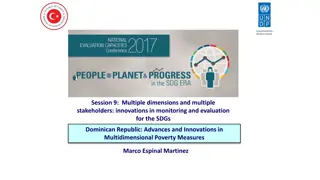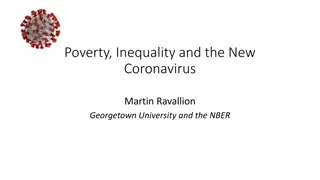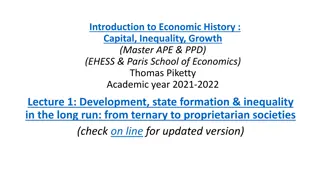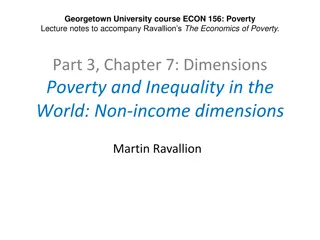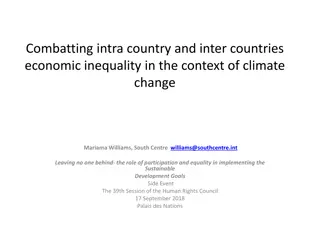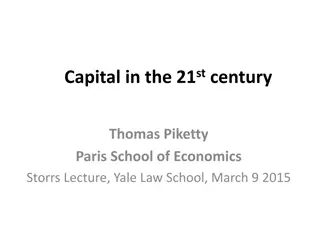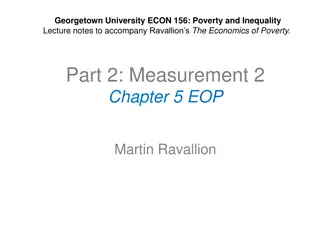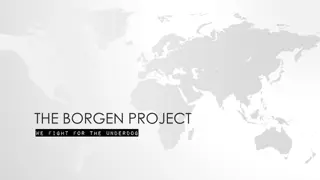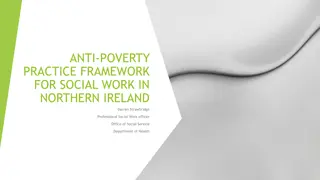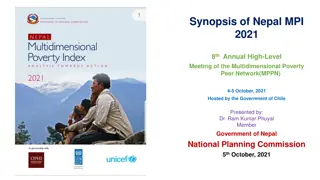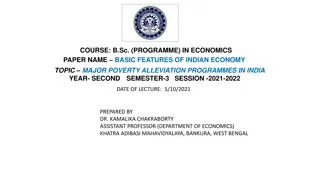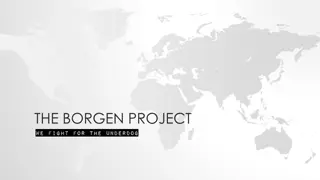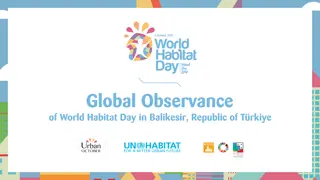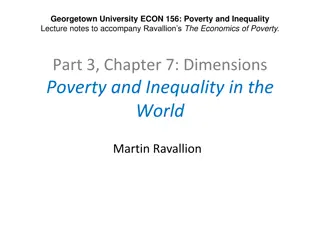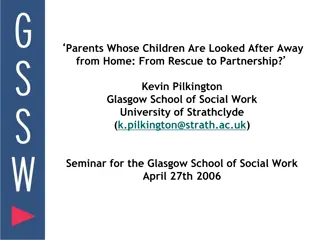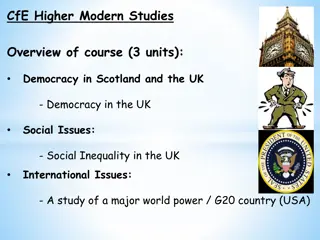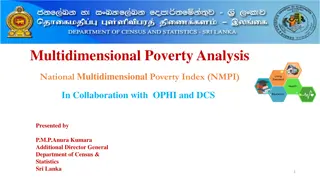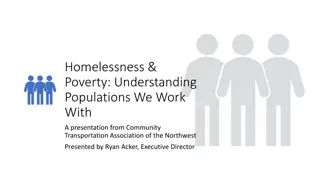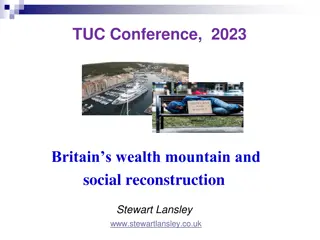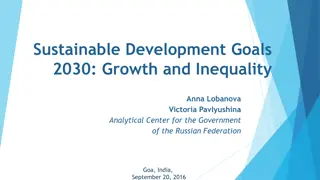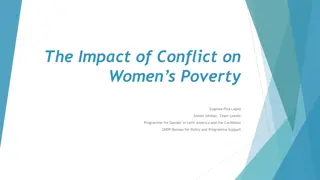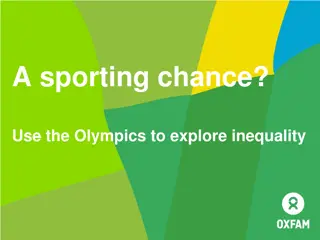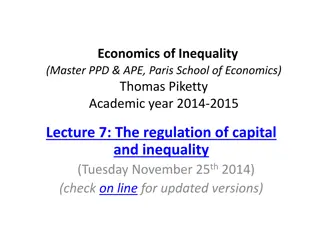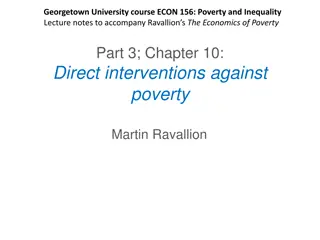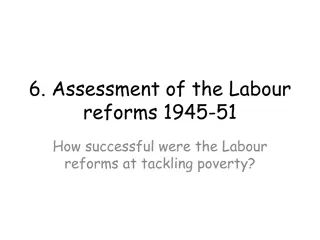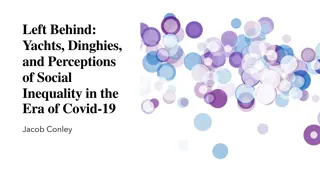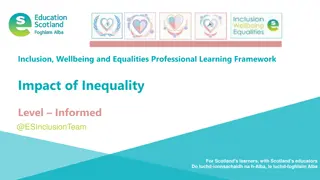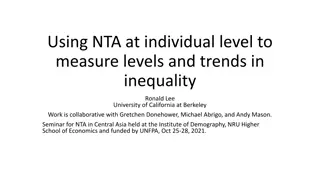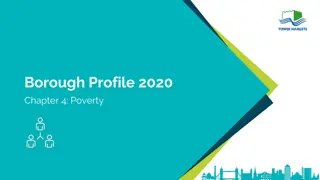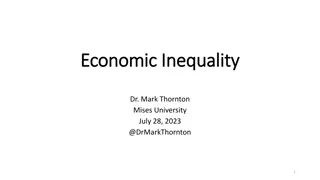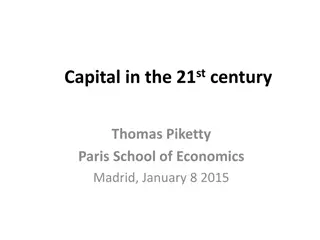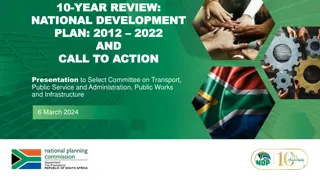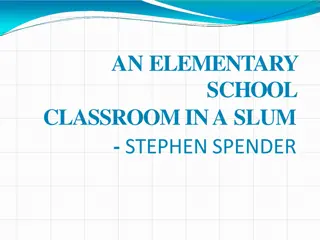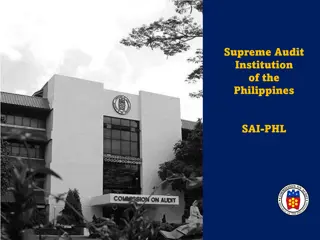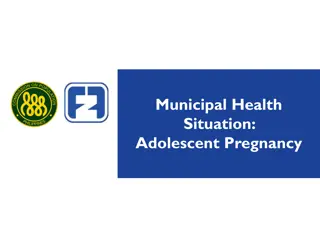Inequality and Poverty in the Philippines: A Closer Look
The case study delves into the paralegal movement in the Philippines and highlights issues of income inequality, poverty, and social disparity in the country. It examines statistics on population, billionaires, and the distribution of income among different percentile groups. The presentation sheds light on the challenges faced by Filipino families in accessing resources and opportunities, emphasizing the need for social empowerment and economic reforms.
Download Presentation

Please find below an Image/Link to download the presentation.
The content on the website is provided AS IS for your information and personal use only. It may not be sold, licensed, or shared on other websites without obtaining consent from the author. Download presentation by click this link. If you encounter any issues during the download, it is possible that the publisher has removed the file from their server.
E N D
Presentation Transcript
Case study I: The paralegal movement in the Philippines Legal Empowerment Leadership Course 2-7 December 2018, Budapest, Hungary MARLON J. MANUEL
Which is the Philippine flag? A B C D
What is todays temperature in Manila? A 20 B 24 C 32 D 38
How many islands are there in the Philippines? A 7,107 islands B 1,707 islands C 710 islands D 107 islands
What is the total population of the Philippines? A 30 Million B 50 Million C 75 Million D 110 Million
Who is the current President of the Philippines? A Arroyo B Estrada C Aquino D Duterte
What is the poverty incidence in the Philippines? A 25 % B 21 % C 19 % D 10 %
How many Filipinos are billionaires? A 0 B 5 C 9 D 12
the bottom 20 percent of families have a share of about 6 percent of the total income country; whereas upper 20% of income distribution have a share of nearly 50% of total income in the the - 2012 First Semester Official Poverty Statistics of the Philippines, National Statistical Coordination Board
The total income of the top 20% of families is approximately 8 times of the total income of the bottom 20% of families in the first semester of 2006, 2009, and 2012. - 2012 First Semester Official Poverty Statistics of the Philippines, National Statistical coordination Board
What is the system of government in the Philippines? A Federal Parliamentary B Unitary Presidential C Federal Monarchy D Federal Presidential
What countries are the former colonial powers of the Philippines? A Netherlands and Portugal B United Kingdom and Germany C Spain and United States D China and Russia
How many civil society organizations are there in the Philippines? A more than 250,000 B more than 100,000 C more than 50,000 D more than 10,000
How many trial court judges are there in the Philippines? A 4,400 B 3,300 C 2,200 D 1,100
How many lawyers are there in the Philippines? A more than 10,000 B more than 20,000 C more than 30,000 D more than 40,000
What is the language of the law and the courts in the Philippines? A Filipino B English C Filipino and other major local languages D English, Filipino, and other major local languages
Metro Manila 55 farmers 1,700 Kilometers 30 -40 kilometers every day October to December 2007 144 hectare land 165 families Sumilao, Bukidnon
1997 October 1997 - 28-day hunger strike President Fidel V. Ramos issued a Win- Win Resolution Supreme Court invalidated the win- win formula
2007 The property remained an agricultural land. No development happened. The landowner sold the land to corporate giant San Miguel Corporation. The farmers filed a case and made another claim for the land. The government denied the farmers claim.
Epilogue December 18, 2007 - the Office of the President issued an order cancelling the conversion permit. March 29, 2008 - the farmers entered into an agreement with San Miguel. 2009 the Philippine Congress passed a law which extended the period of implementation (and the budget) of the agrarian reform program. Today, the farmers operate and manage the farm as a social enterprise, through a farmers cooperative.
The Sumilao farmers, a decade after they marched for their rights https://www.rappler.com/move-ph/185345-sumilao- farmers-decade-after-march DECADE AFTER. The lives of the Sumilao farmers have changed in so many ways 10 years after they fought for their rights.
The Sumilao farmers, a decade after they marched for their rights https://www.rappler.com/move-ph/185345-sumilao- farmers-decade-after-march Bajekjek Orquillas YOUNGEST FARMER. Bajekjek Orquillas is the youngest farmer who joined the walk. Photo by Ana Santos
Rene Peas Gunned down on June 5, 2009 by unidentified persons
The Sumilao farmers, a decade after they marched for their rights https://www.rappler.com/move-ph/185345-sumilao- farmers-decade-after-march Noland Penas DECADE AFTER. The lives of the Sumilao farmers have changed in so many ways 10 years after they fought for their rights. A BETTER LIFE. Noland Penas used to have no land of his own, but now that he already does, life has become so much better. Photo by Ana Santos
Martin Luther King, Jr. But those who adhere to the method of nonviolent, direct action recognize that legislation and court orders tend only to declare rights they can never thoroughly deliver them. Only when the people themselves begin to act are rights on paper given lifeblood. Life is breathed into a judicial decision by the persistent exercise of legal rights until they become usual and ordinary in human experience. (The case Against Tokenism, New York Times Magazine, 5 August 1962)
Group Discussion What is the strategic role of legal empowerment programs -- and of paralegals -- in the period or situation described? (WHAT MUST BE DONE?) Are there similarities with events/situations in your country s history?
Group 1 The President has ruled the country for two decades under martial law. Leaders of the political opposition and activists are arrested without court orders, and detained for prolonged periods without formal charges. Thousands become victims of human rights violations (torture, extra-judicial killings, enforced disappearances, etc.).
1972-1986 Marcos dictatorship The President ruled the country under martial law. Leaders of the political opposition and activists were arrested without court orders, and detained for prolonged periods without formal charges. Thousands became victims of human rights violations (torture, extra-judicial killings, enforced disappearances, etc.).
Group 2 After twenty years in power, the dictator was removed from office through a peaceful uprising. The new president convened a commission which drafted a new Constitution. The Constitution contained many progressive provisions, including provisions that recognized the role of people s organizations, and those mandating the Legislative (Congress) to enact social justice laws.
1986-1990 New government; New constitution After twenty years in power, the dictator was removed from office through a peaceful uprising. The new president convened a commission which drafted a new Constitution. The Constitution contained many progressive provisions, including provisions that recognized the role of people s organizations, and those mandating the Legislative (Congress) to enact social justice laws.
Group 3 With the mandate of the 1987 Constitution, the Congress enacted many progressive social justice laws. The enactment of laws led to the implementation of many social justice programs that address different issues housing, agrarian reform, violence against women, etc.
1987-1997 Social Justice Legislation With the mandate of the 1987 Constitution, the Congress enacted many progressive social justice laws. The enactment of laws led to the implementation of many social justice programs that address different issues.
Group 4 A law for local governments became effective. The law provides for mechanisms for people s participation in land use planning, development planning, local budget preparation, local policy formulation. Many local government officials were receptive to civil society inputs and participation.
1992-2001 Local Government Strengthening A law for local governments became effective. The law provides for mechanisms for people s participation in land use planning, development planning, local budget preparation, local policy formulation. Many local government officials were receptive to civil society inputs and participation.
Group 5 The Supreme Court initiated a comprehensive judicial reform program, which attracted multi- stakeholder support (including from many donor agencies). The Supreme Court conducted many activities (including consultations with various sectors) with the objective of addressing access to justice, and other issues of the justice system.
2001-2010 Judicial Reform The Supreme Court initiated a comprehensive judicial reform program, which attracted multi- stakeholder support (including from many donor agencies). The Supreme Court conducted many activities (including consultations with various sectors) with the objective of addressing access to justice, and other issues of the justice system.
Group 6 There has been a growing number of issues concerning destruction of natural resources and communities adversely affected by corporate activities (especially mining). The Supreme Court issued special rules for environmental cases, which provide remedies for communities affected by activities that have adverse impact on the environment.
2010-2016 Focus on Corporations There has been a growing number of issues concerning destruction of natural resources and communities adversely affected by corporate activities (especially mining). The Supreme Court issued special rules for environmental cases, which provide remedies for communities affected by activities that have adverse impact on the environment.
Group 7 A populist President was elected. Immediately after the President started his term, he launched a campaign against illegal drugs ( War on Drugs ) and ordered the police to start a very aggressive operations against suspected drug users and suppliers. Thousands of drug personalities were killed, allegedly in legitimate police operations.
2016-Present Dutertes War on Drugs A populist President was elected. Immediately after the President started his term, he launched a campaign against illegal drugs ( War on Drugs ) and ordered the police to start a very aggressive operations against suspected drug users and suppliers. Thousands of drug personalities were killed, allegedly in legitimate police operations.
